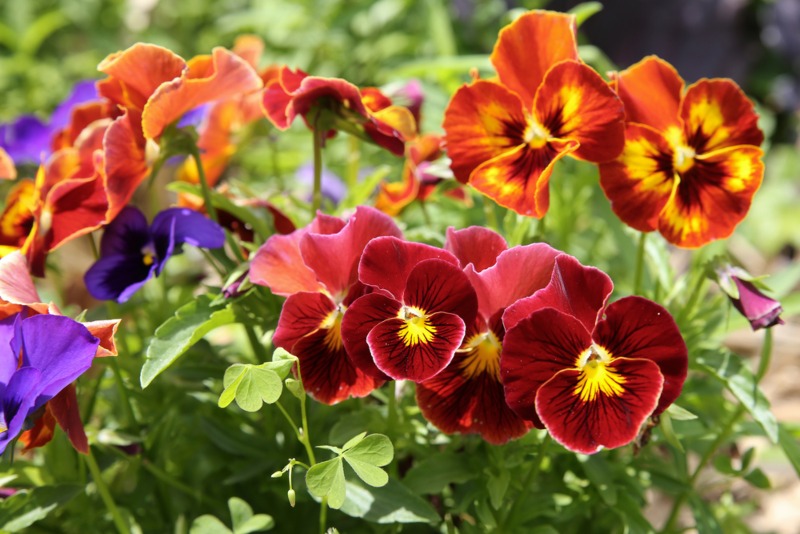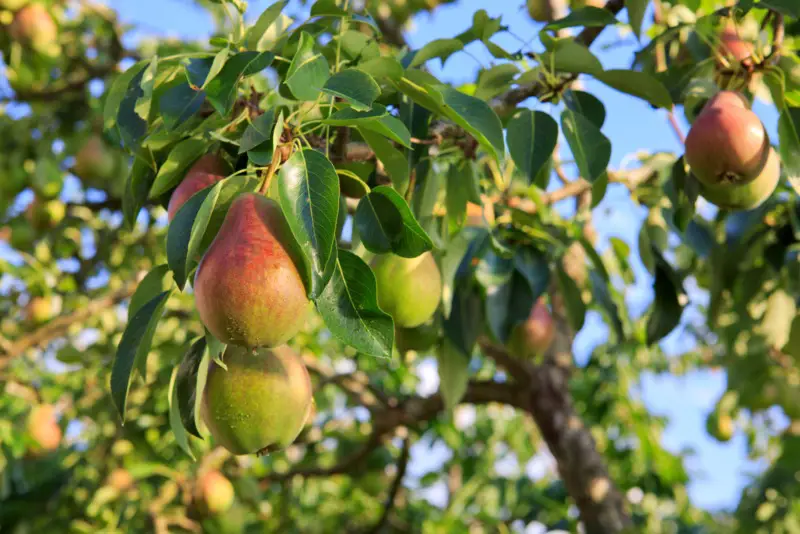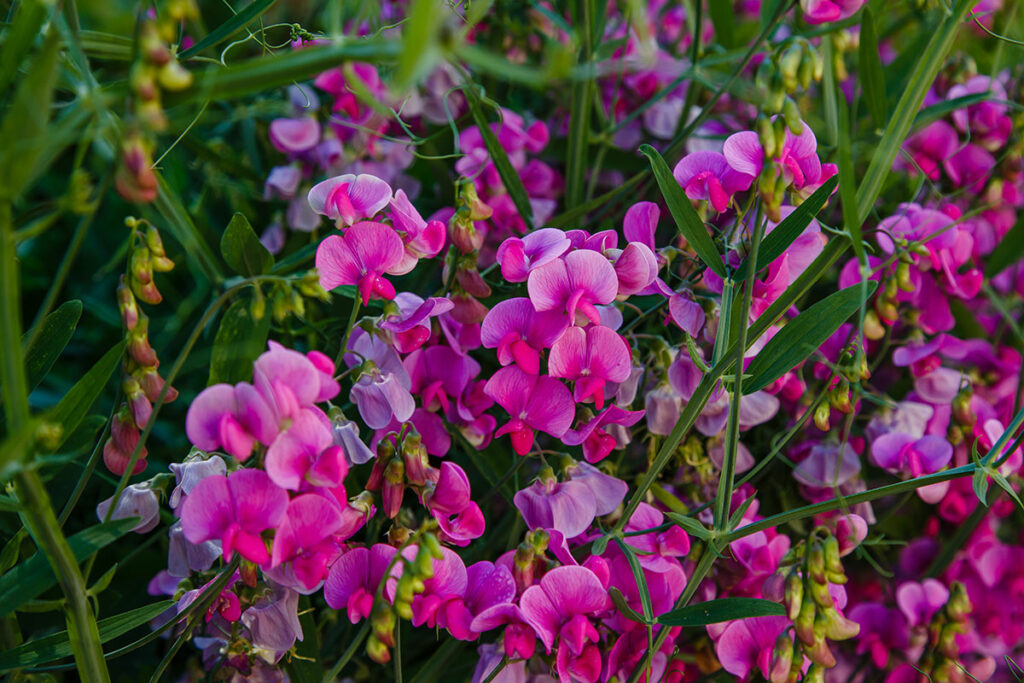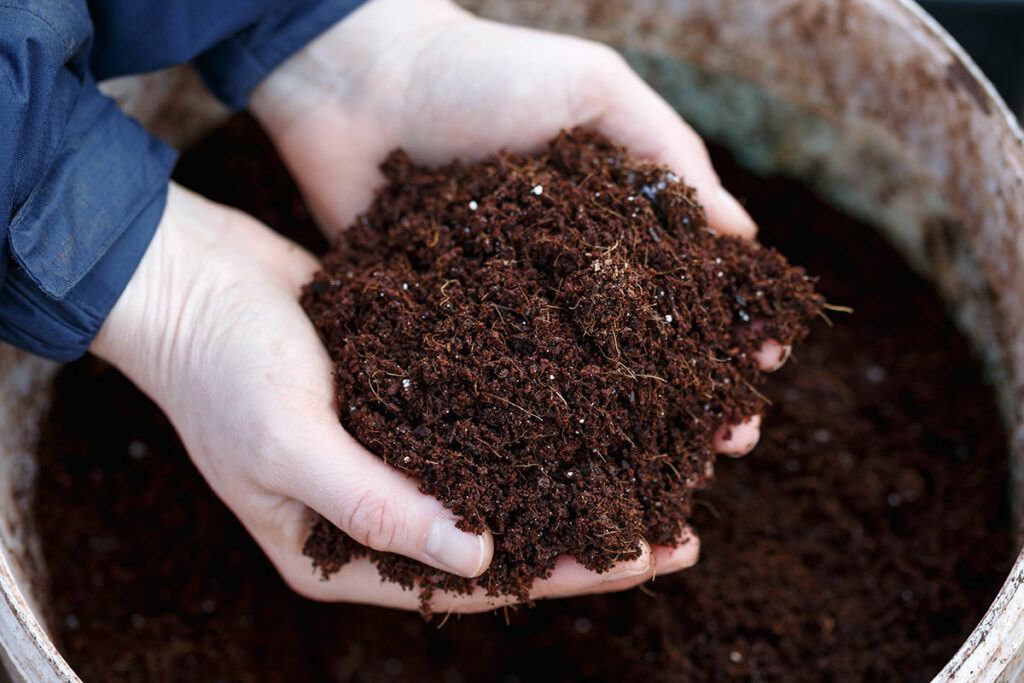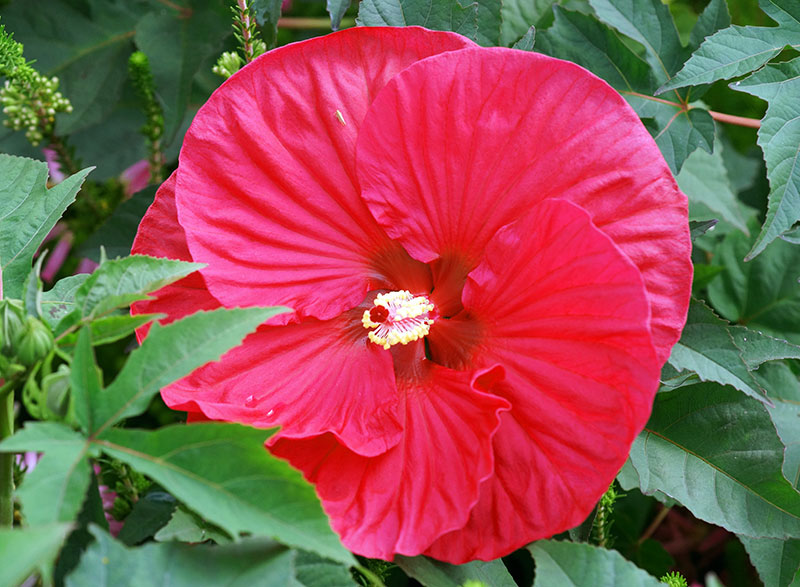
Tomatoes are a popular garden staple, but did you know that there’s an easy way to enhance their performance in your garden?
Marigolds, a vibrant and hardy flower, can be a tomato plant’s best friend when planted nearby. By surrounding your tomato plants with marigolds, you can expect a variety of benefits that can lead to healthier, more productive plants and a visually stunning garden scene.
Key Takeaways
- Marigolds help deter common tomato pests
- Planting marigolds can improve pollinator activity
- Tomatoes and marigolds have a mutually beneficial relationship in gardens
5 Reasons To Surround Your Tomato Plants With Marigolds
Planting marigolds near your tomato plants offers a variety of benefits, improving the health and yield of your tomato crop. Here are five reasons to consider this gardening strategy:
- Natural pest control: Marigolds produce a strong scent that repels many common tomato pests, such as aphids, whiteflies, and tomato hornworms. By planting marigolds near your tomato plants, you can reduce your reliance on chemical pesticides and keep your garden healthy and environmentally friendly.
- Attract beneficial insects: While marigolds deter harmful pests, they also attract helpful ones. These beneficial insects, such as ladybugs and lacewings, feed on the pests that damage your tomato plants. Incorporating marigolds into your garden creates a welcoming environment for these beneficial insects, providing a natural and effective form of pest control.
- Improved pollination: Marigolds offer bright, colorful blooms that attract pollinators like bees and butterflies. Having a variety of pollinators in your garden increases the chances of successful tomato pollination and a more bountiful harvest.
- Enhance soil health: Marigolds are known to produce a natural substance that suppresses harmful nematodes – microscopic worms that can damage plant roots. By planting marigolds near your tomato plants, you’ll help ensure better nutrient absorption, leading to stronger and healthier plants.
- Aesthetic appeal: Lastly, marigolds add beauty to your garden with their vibrant colors and attractive foliage. Mixing marigolds with your tomato plants creates a visually appealing garden while simultaneously providing numerous practical benefits.
By incorporating marigolds into your tomato garden, you’ll enjoy a healthier, more productive, and visually stunning garden space. Give it a try and witness the difference for yourself!
Natural Pest Repellent
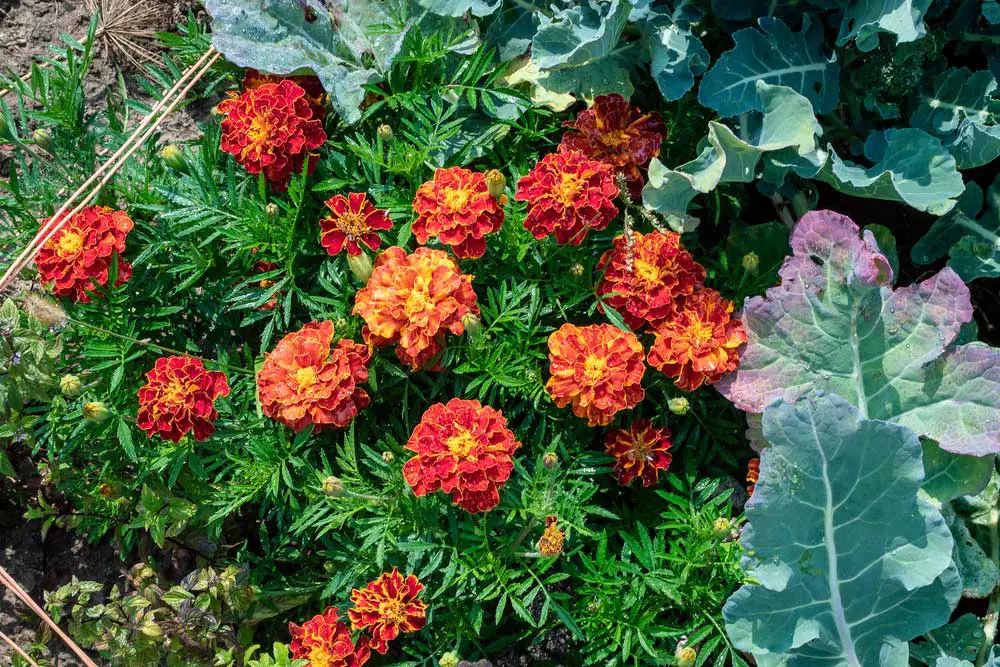
One of the main reasons to surround your tomato plants with marigolds is their natural ability to repel pests. Marigolds contain compounds known as limonoids, which deter various insects and pests. Let’s look at how marigolds can help ward off three common pests: tomato hornworms, aphids, and whiteflies.
Tomato Hornworms
Tomato hornworms can cause significant damage to your tomato plants, but growing marigolds alongside your tomatoes can help prevent these destructive pests. The strong scent of marigolds deters hornworms from munching on your plants, keeping them healthy and intact.
Aphids
Aphids are another common tomato pest, and they can multiply quickly if left unchecked. Luckily, marigolds have a dual benefit in the fight against aphids. Firstly, their strong aroma repels these small pests. Secondly, marigolds attract beneficial insects like ladybugs, which are natural predators of aphids.
Whiteflies
Whiteflies can cause a decrease in your tomato plant’s yield by both sucking the sap from the leaves and transmitting plant diseases. These tiny flying pests are also repelled by the scent of marigolds. By planting marigolds around your tomato plants, you’re effectively creating a protective barrier against whiteflies.
Attracting Pollinators
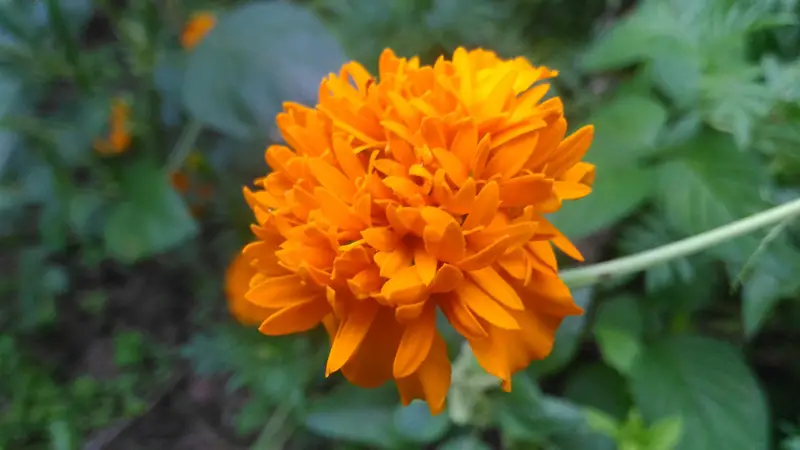
One of the key reasons to surround your tomato plants with marigolds is that they attract a variety of pollinators. Pollinators play a crucial role in the growth and fruit production of your tomato plants. In this section, we’ll explore how marigolds help attract beneficial insects, butterflies, and bees to your garden.
Beneficial Insects
By planting marigolds near your tomato plants, you create a more attractive environment for beneficial insects. These helpful creatures control pests and contribute to the overall health of your garden. Some of the beneficial insects attracted by marigolds include:
- Ladybugs: Efficient at controlling aphids and other pests.
- Lacewings: Known for their voracious appetite for aphids.
- Hoverflies: The larvae of hoverflies feed on aphids and mites.
These insects help control harmful pests and maintain a balanced ecosystem in your garden.
Butterflies
Marigolds’ vibrant colors and sweet scent are alluring to butterflies. As graceful pollinators, butterflies visit your garden to feed on the nectar of marigold flowers and, in the process, pollinate your tomato plants. Butterflies not only enhance the beauty of your garden but also contribute to increased fruit production.

Bees
Bees are some of the most critical pollinators for a wide variety of plants, including tomatoes. Marigolds attract bees with their bright colors and appealing nectar. By having marigolds close to your tomato plants, you encourage more bee visits, which translates to better pollination and, ultimately, a more bountiful harvest.
Soil Improvement
Nematode Control
Planting marigolds around your tomato plants can significantly reduce the number of harmful nematodes in the soil. Nematodes are tiny, worm-like creatures that feed on plant roots, causing damage and stunted growth. Marigolds release chemicals into the soil that repel these pests, keeping them away from your tomatoes.
It’s essential to plant marigolds close to your tomatoes for maximum nematode reduction. When growing marigolds for this purpose, it’s best to opt for the French or African varieties, as they have higher concentrations of the repellant chemicals.
Root Knot Nematode
Root knot nematodes are a particularly harmful type of nematode that wreaks havoc on tomato plants. They cause swelling and distortion in tomato roots, leading to poor nutrient uptake and overall unhealthy plants.
The good news is that marigolds are especially effective at controlling root knot nematodes. By releasing their natural chemicals into the soil around your tomato plants, marigolds can prevent these destructive pests from infesting your garden. As a result, your tomato plants will grow healthier and stronger, with better access to vital nutrients.
To make the most of this benefit, consider planting marigolds densely around your tomato plants and alternating rows of marigolds with rows of tomatoes for even better nematode control. With this simple addition to your garden, you can improve soil health and provide the ideal environment for your tomatoes to thrive.
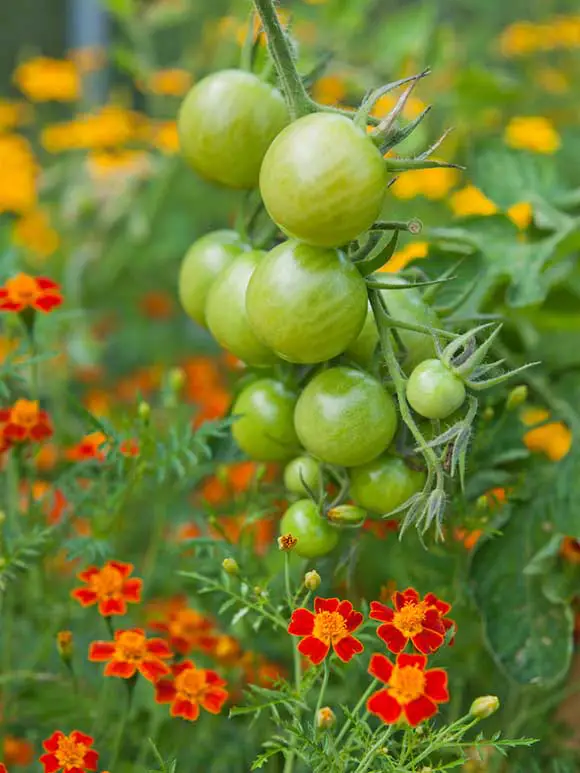
Companion Planting Benefits
Increased Tomato Yield
When you plant marigolds around your tomato plants, you help increase their yield. This is because marigolds release a substance called alpha-terthienyl that repels nematodes, which are pests that can stunt tomato plant growth. By repelling these harmful pests, you keep the soil around your tomatoes healthier, allowing them to produce more fruit.
Mutual Growth Support
Marigolds and tomato plants have a mutually beneficial relationship. Not only do marigolds help protect tomato plants from pests, but they also attract beneficial insects like ladybugs and lacewings that prey on other harmful pests. This creates a healthier environment for both plants to grow in.
In addition, companion planting with marigolds can improve soil quality by promoting water retention and nutrient distribution. This means both the tomato plants and marigolds can utilize nutrients more efficiently, leading to better overall growth for both plants.
Remember, when you choose to surround your tomato plants with marigolds, you’re not only adding visual appeal to your garden, but you’re also promoting a healthier and more productive growing environment for your plants.

